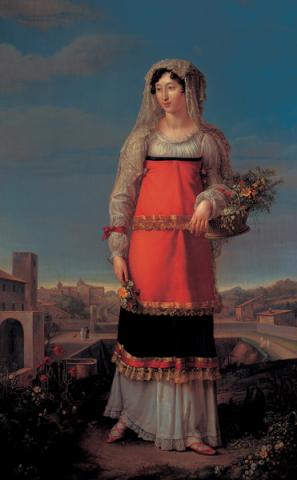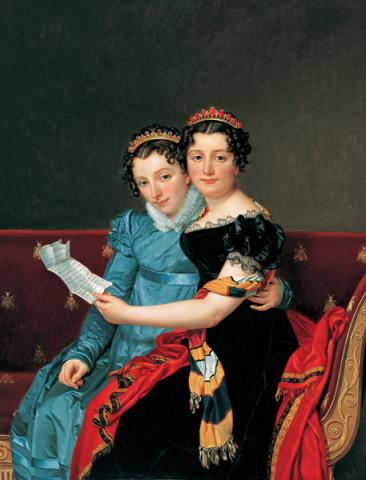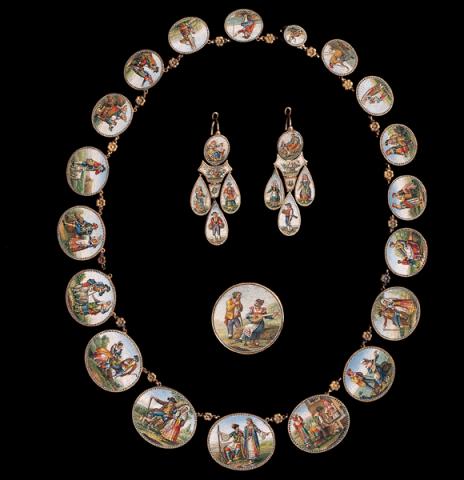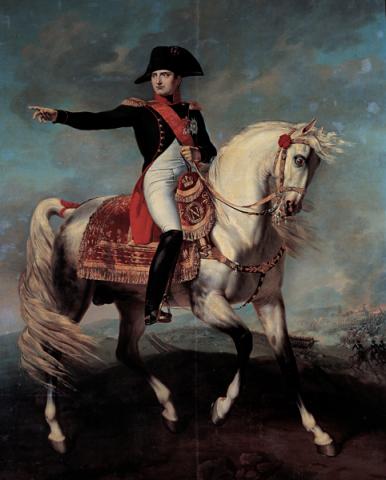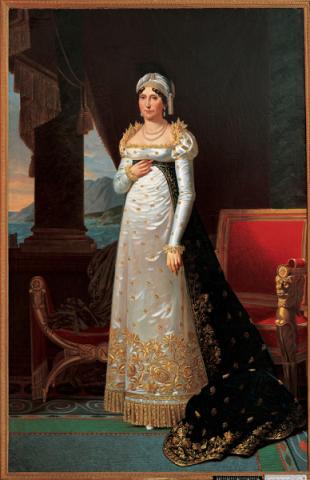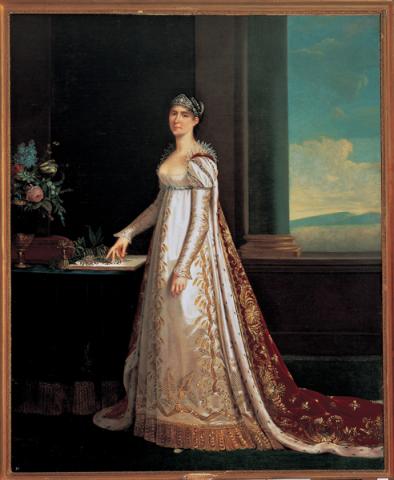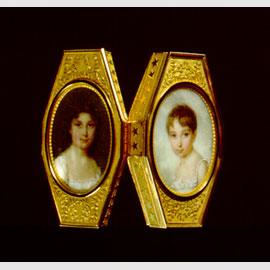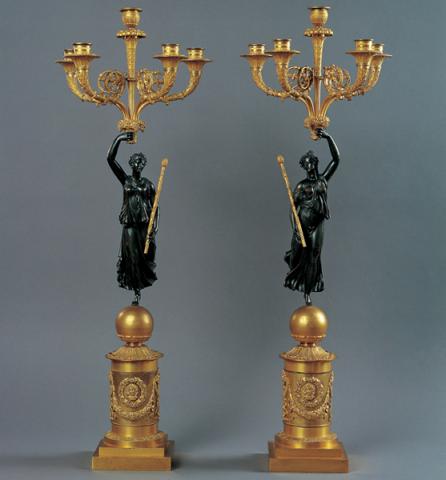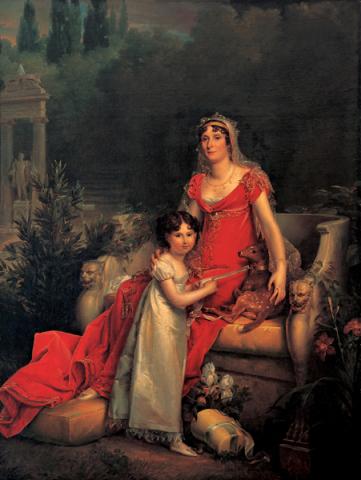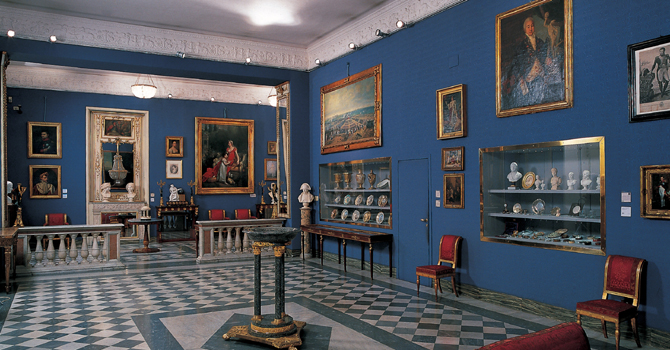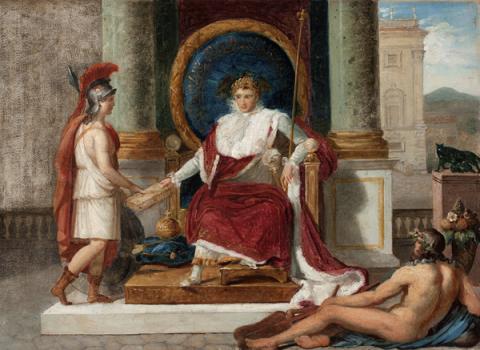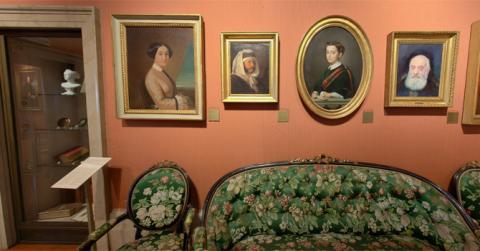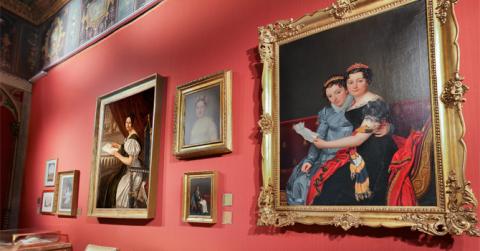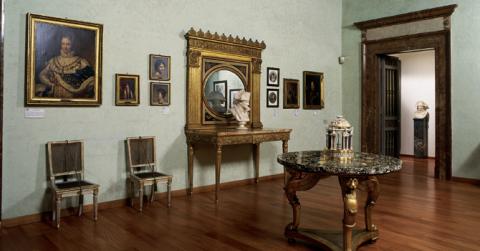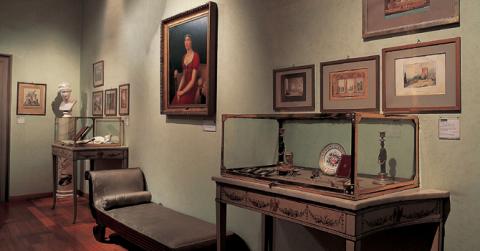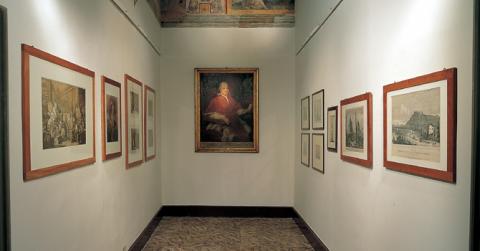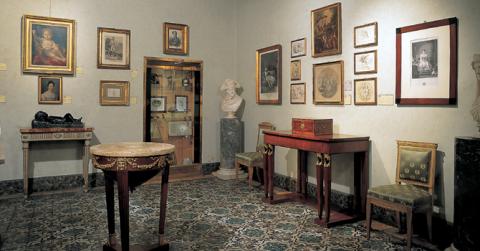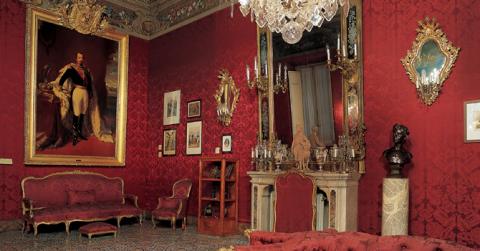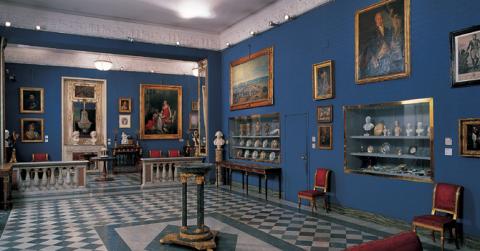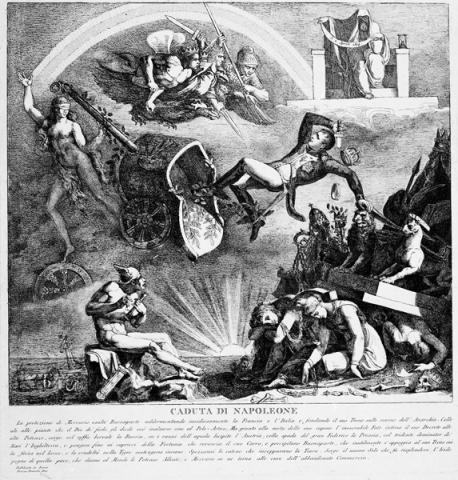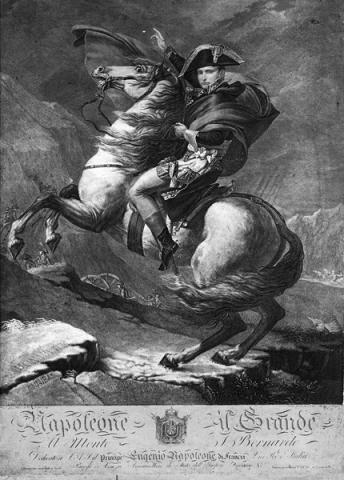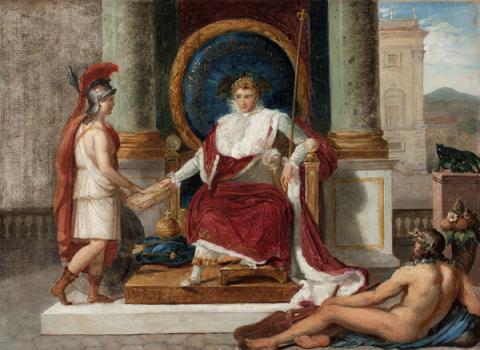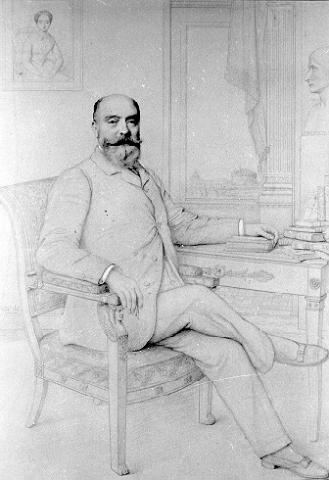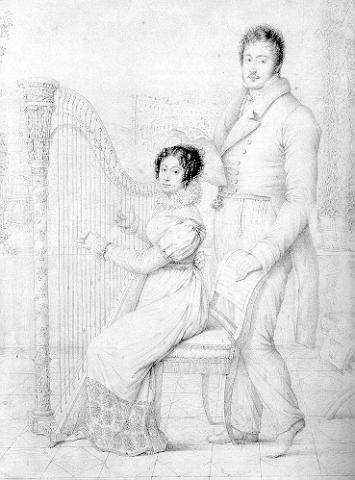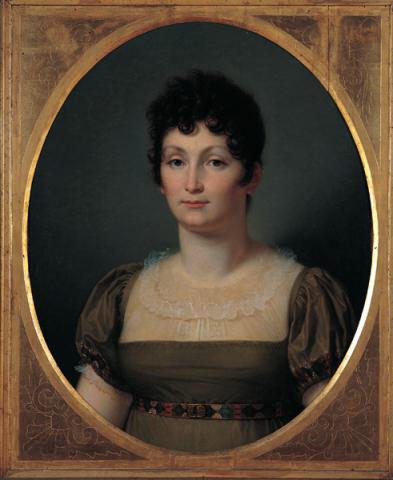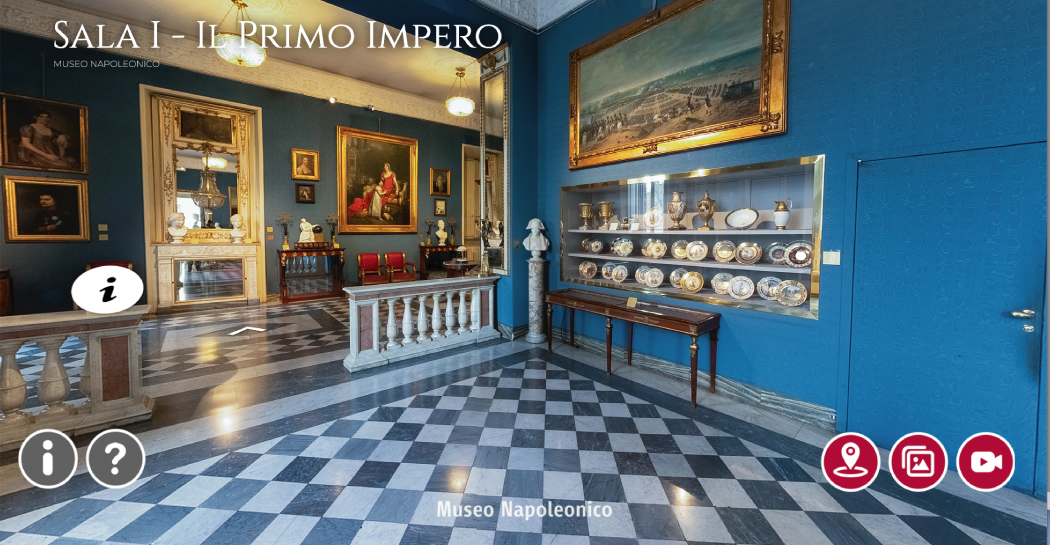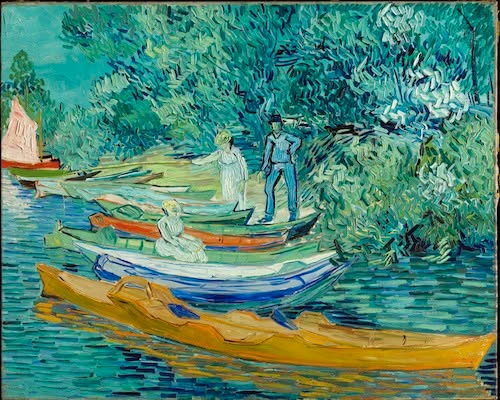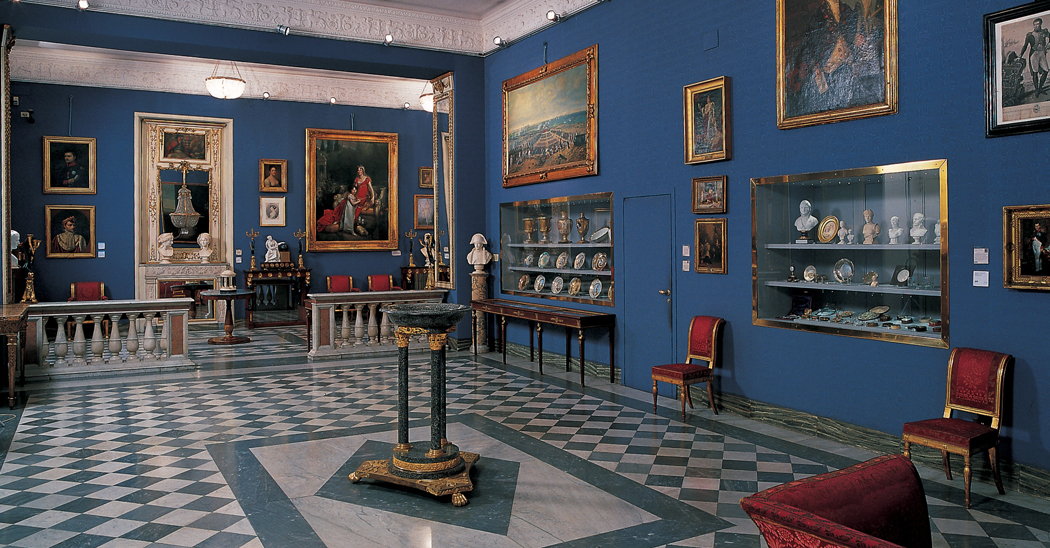Letizia Bonaparte (Madame Mère)
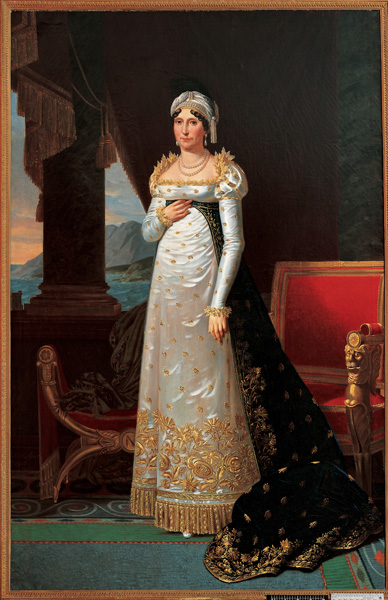
Robert Lefèvre
Robert Lefèvre, after several attempts at historical painting, from the last years of the XVIII century, successfully dedicated himself to portraiture. Through the patronage of Vivant Denon (nominated Director General of the Museums in 1802), he obtained many imperial commissions. He continued on this path under Louis XVIII, becoming the king’s foremost painter. The verisimilitude of his portraits is particularly noted, despite the flattering style of all Napoleonic portraits. Even in this portrait of the emperor’s mother, despite the sumptuous clothes and elegant furnishings, he catches a certain hardness in the lines of the woman’s body and her dour expression. This brings out Letizia Ramolino’s firm and somewhat coarse character. The daughter of an Inspector General of the Civil Engineers of Corsica, she married Carlo Maria Bonaparte at an extremely young age and was a widow by the time she was thirty-four. She seems to have retained a sense of the hardship and unpredictability of life, even during the years of Napoleon’s greatest glory.
Masterpieces of the hall
The hall
The first two rooms, divided only by a marble balustrade, form a unique area dedicated to the splendour of the First Empire (1804-1814). Here are collected the large canvases which depict numerous members of the imperial families in noble and conventional poses. Next to these official portraits, commissioned by Napoleon after his consecration as emperor, are displayed the private portraits, which, through the waxesof Giambattista Santarelli, enamel miniatures, cameos by Nicolò Morelli, and snuff boxes, give a more intimate portrait of the Bonaparte family’s history.


























